From the West Hartford Archives: West Hartford Choirs and Glee Clubs

Audio By Carbonatix
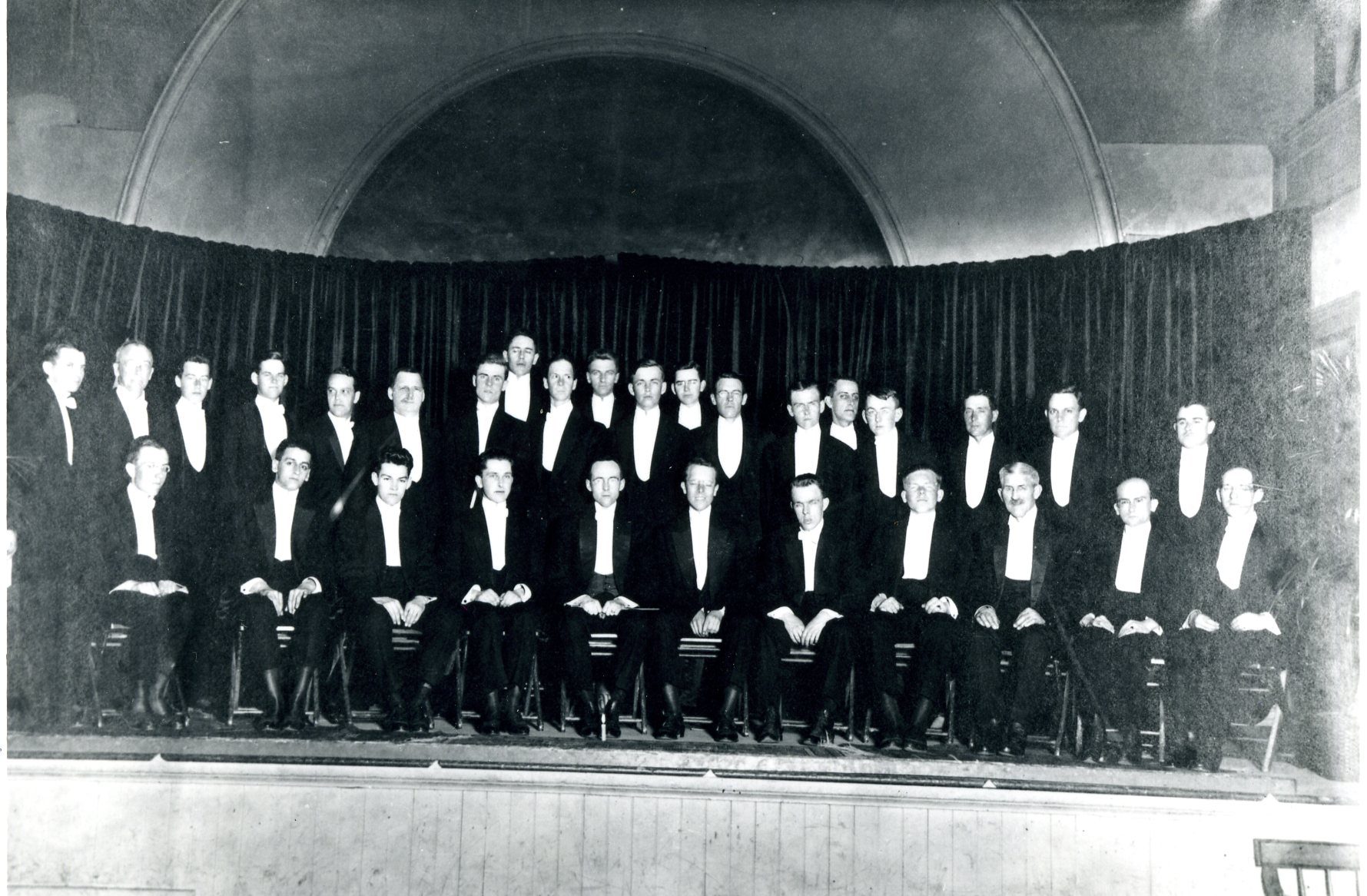
Members of a West Hartford Glee Club. Photo courtesy of Noah Webster House & West Hartford Historical Society
Historian Jeff Murray takes a look into West Hartford’s past to uncover some surprising information, stir up some memories, or reflect on how much life has changed – or hasn’t changed at all. Enjoy this week’s ‘From West Hartford’s Archives’ …
By Jeff Murray
The choirs and glee clubs in West Hartford faced a jumbled and clunky development, but there are some key eras that helped add to the culture of this town before our modern era.
Early churches, especially the Congregational Church in the 1700s here, focused on unison singing of psalms, but over time, church-associated choirs were established to bring character to worship. These choirs initially met resistance but gained acceptance over many years as they demonstrated their ability to enhance the religious experience for churchgoers. As West Hartford’s First Church grew and built larger, more formal meeting houses, choirs became more institutionalized.
Lory Brace was appointed chorister of the First Church in 1795 and served in that capacity for three decades until his death. The Brace family were old settlers in 1700s West Hartford. Lory’s great-grandfather was one of the first to buy land in West Hartford Center, abutting the old burial ground on North Main Street.
Brace family members were paid for digging some of the earliest graves and then built the second gristmill in the town’s history, located north of where Farmington Avenue crosses Trout Brook in the 1720s. Future generations operated the gristmill and built a house at the corner of North Main Street and what is now Brace Road.
In 1820, as the story goes, Lory Brace purchased a violin from a sea captain who had brought it over from Holland. Instruments like the violin, flute, and bass viol (an early cello) were simple enough for the choir in the First Church to establish some underlying music for the congregation without being deemed “distracting” or overly “secular.” Lory Brace’s violin was passed down to his son, Thomas Brace, who took over as chorister in 1825 upon his father’s death.
Thomas, like his father, served in this role for decades until his resignation in 1866. He sold off some of his land in the beginning of 1834 for a new First Church building at the northwest corner of Farmington Avenue and North Main Street. He petitioned the General Assembly for the independence of West Hartford in 1854, served on one of the first boards of tax relief, and was heavily involved in politics through the 1850s. He oversaw the expansion of the First Church choir through his resignation, which prompted the congregation to write him a letter urging him to come back. “We are now unaware of the fact that a compliance with our request may involve a sacrifice of the personal comfort of Mr. Brace, but we have been so long accustomed to his presence and leadership that we do not know how to do without them,” read the letter. The eldest son of Rev. Myron Morris wrote a poem 28 years after his resignation, enshrining the faithful service of the chorister.
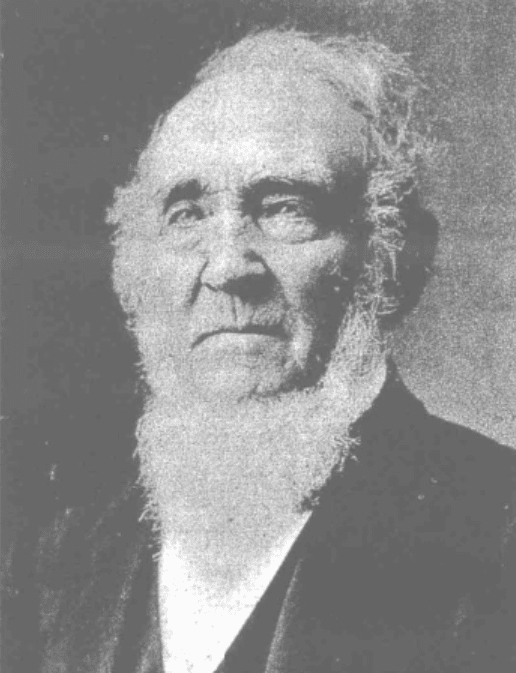
Thomas Brace, the chorister of the First Church choir from 1825 to 1866. Photo courtesy of Noah Webster House & West Hartford Historical Society
After the Civil War, West Hartford saw the rise of smaller glee clubs, singing schools, groups for new religious institutions, and persistent attempts at long-lived town-wide choirs, all of which tended to reflect the current events of the day. Glee clubs initially referred to informal groups that sang “glees” in 18th-century Britain. By this era, the term evolved to include male and mixed-voice singing groups performing folk songs, hymns, and popular tunes.
American universities and colleges adopted the glee club tradition, inspired by these British models and pushed by a growing interest in campus life and extracurricular activities. The Trinity College Glee Club gave several concerts in the late 1870s into the early 1880s. West Hartford had its own informal glee club (aptly named the West Hartford Glee Club), which furnished music in 1880 for political rallies and social events both in and out of town. In some cases, they cooperated with the Hartford Glee Club, traveling by omnibus in the 1880s to sing for individual homes on the route.
The late 19th and early 20th centuries saw a surge in the popularity of glee clubs and smaller groups. They began to incorporate a variety of musical styles and blend seamlessly with the choirs of churches and universities. Some concerts here in the 1890s featured singing and instrumental music from nearly everyone.
Town-wide glee clubs like West Hartford’s were often featured to commemorate national events, such as Memorial Day celebrations, centennials, and political rallies – all an expression of civic pride. However, these groups could best be described as bright flames that burned out quickly, over and over and over again. They were incredibly dependent on their leadership and any disruption tended to bring them to an end.
After some years of inactivity, the “West Hartford Choral Union” was formed in December 1891 for a quick season and was followed the next fall by a reorganization under Professor Benjamin W. Loveland, brand new owner of a lot on the east side of town, where he intended to build a house. He trained the group each week in consistent rehearsals and directed a large concert in the town hall in mid-winter 1893, assisted by Hartford musical talent, including people who would one day live in West Hartford (albeit some more than 30 years later). Some of their concerts featured music from Trinity College Glee and Mandolin Club. The Choral Union had 53 members, but by the end of the season, the flame had burned out and when the season started again in December 1893, not as many people showed up and Loveland resigned.
The following year, efforts were made to reorganize the society under W. H. Goodacre, the new president, with new energy. After a few concerts into 1895 (the concerts were about 20 cents for admission), the season ended. That fall, nobody showed up again!
Some groups stayed strong at the same time. The Elmwood Choral Society rehearsed consistently for years in the 1890s and gave multiple concerts at the Elmwood Chapel and at the town hall. The cantatas that they performed provide some depth to the American culture of the late 1890s. In the spring of 1897, the Elmwood Choral Society presented “The Haymakers,” which celebrated rural life and the pastoral traditions of haymaking. Works like this were well-suited to the growing amateur choral society movement in the Victorian era. There were scenes of farm life with lively choruses, solos, and duets, all emphasizing the values of hard work, community, and harmony with nature.
This would have been increasingly romanticized in the 1890s as industrialization steamrolled over the landscape. Just a few years before, farmers and rural Americans, some in West Hartford, were impacted by falling crop prices and other economic hardships from the Panic of 1893 that helped give rise to the Populist movement. This cantata, consciously or not, served as cultural nostalgia against a backdrop of heavy machinery and factories, just two blocks away. This period across the U.S. also saw a surge in patriotic compositions, inspired by the centennial of American independence and the growth of local communities, like Elmwood, which could support such a celebration.
More importantly, America was on the brink of war with Spain in April 1898 when the Elmwood Choral Society presented “The Heroes of 76” in the chapel. This war, sparked by tensions over Cuba’s fight for independence and the explosion of the USS Maine in Havana Harbor, ignited a wave of patriotic fervor across the nation. This cantata was performed less than two weeks before war on Spain was officially declared. It was then performed two more times into May 1898, fitting for the time. One of the cast members left soon afterwards with the military.
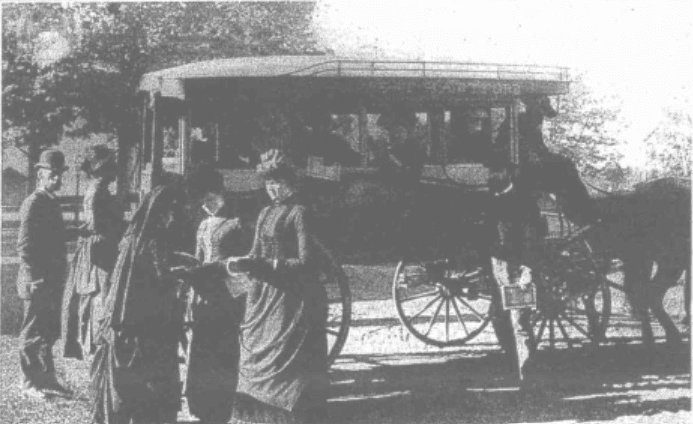
West Hartford and Hartford Glee Clubs going out for serenade, 1880s. Photo courtesy of Noah Webster House & West Hartford Historical Society
Ten years later, in 1908, William Merrill organized the West Hartford Glee Club again, looking to reorganize the group that had simply faded away in the 1890s. Like most organizations in town, the Glee Club was very associated with the First Church, which was still at this time the central community hub. Church socials and memorial services featured common glee appearances. The club supported church projects, raising money for a new church organ motor in 1909. Music was the social glue – they hosted entertainments at members’ houses, community dances, parties after rehearsals, and group games. The group was extremely involved in civic projects throughout town, most notably fundraising for the Noah Webster Memorial Library.
More than anything though, the all-male West Hartford Glee Club represented a growing movement known as “Muscular Christianity.” This movement advocated for the development of both body and character, encouraging men to be active participants in their communities. It fostered civic and moral improvement while promoting traditional ideals of masculinity. All of these values were blended with Christian practices into a “moral duty” to contribute to society, often embodied by someone like President Theodore Roosevelt. At first glance, this is an odd connection, especially to the glee club. But Muscular Christianity simply valued activities that cultivated both the mind and spirit – the Glee Club’s focus on choral music, patriotic themes, and performances in religious and civic events reinforced the idea of serving a higher purpose.
The President of the club at this time was George Thayer, who worked as the YMCA physical director. He was a veteran of the Spanish-American War, was an extensive hiker, and would later serve in World War I despite his age. In 1911, Thayer encouraged the club to attend a meeting of the Men and Religion Forward Movement at the North School, which had been organized by a YMCA leader a year prior to mix muscular, revivalistic, and social sensibilities with day-to-day religious work. Rev. Mahlon Tunison of the Baptist Church, who directed the club’s music from 1910 to his resignation, worked alongside the YMCA to give the club a greater purpose.
The old Center School on North Main Street was leased by the YMCA at the same time that Thayer became the President of the organization and converted it into a communal space. A skating pond was completed out back for winter sports and the interior featured a bowling alley when it opened in 1913. The West Hartford Glee Club used this space for years for rehearsals. They also joined the bowling league, although they lost horrifically in the first season and came in last place against the town’s firefighters, basketball team, and the florists (I’m sure that one hurt).
Concerts were given consistently through 1913 and 1914, but like all of their predecessors, the flame simply burned out. They ran through four different leaders in two years and voted to disband and reorganize by 1916. Even then, after the late winter concert, their influence declined and rehearsals were not held anymore. There could be a variety of reasons for this, especially in the 1910s – new forms of entertainment, like movies and then radio, may have competed to take away from amateur performances. More likely, however, was that diminishing participation, interest, and disorganized leadership simply led to the club to naturally dissolve.
If the idea of a town-wide glee club didn’t stick, the high school glee club provided a better foundation for long-term growth. Music education had become a formal part of the American school curriculum (and electives) by the late 19th century. Children in the First Church could take a class for vocal instruction as early as 1899. The West Hartford public schools had a vocal music teacher on staff in the mid-1900s, conducting the high school choir.
Glee clubs, as extracurricular singing groups, became a natural extension of classroom instruction, especially as a social activity. Surrounding towns and the City of Hartford had established clubs at their high school already and they were a great way to show school pride under the leadership of the faculty.
As early as the fall of 1909, the West Hartford Girls’ Glee Club was formed. As much as the town-wide male glee club had pursued the idea of “Muscular Christianity,” a girls’ club in high school helped promote a socially acceptable outlet for creativity and expression while aligning with the traditional ideals of femininity, especially in a “refined” and “appropriate” group. Of course, this is only a part of the story considering the West Hartford High School had girls’ sports teams too, like basketball. But there tended to still be differential paths – boys could be drawn to sports like football and baseball, and girls who did not try out for basketball could join a club that trained a skill like vocal music.
The vocal music teacher, Helen Webb, who took over in 1908, had nurtured a quartette in her first year and helped pave the way for the glee club; one of the other members was Louise Day (namesake of our Duffy Elementary School after her married name). When she resigned in the summer of 1909, James D. Price took over as instructor and led the glee club.
By the first concert in 1910, the West Hartford High School Girls’ Glee Club had 32 members. The following year, Price continued work with an annual concert in the first few months, with a program consisting of solos by President Bertha Kaeser and Myrtle Brigham, as well as a piano solo by Ruth Pitkin. Bertha Kaeser graduated from the high school a few years later, began teaching typewriting, and then served as secretary to Lloyd Bugbee, at that time the high school’s principal. When he was appointed superintendent of schools in 1922, she came with him. She died in 1927 of a long illness. Myrtle Brigham grew up in the house that was later torn down for the Central Theater on Farmington Avenue, and sang in the First Church choir for many years after.
Over the next few years, the club raised their profile by performing at First Church socials, at high school graduations, and even the state convention of teachers in Hartford in 1912. A few months later, they sang for the meeting of the school teachers and spouses. As the Courant wrote on January 7, 1913: “It is gratifying to note the measure of success which the Girls’ Glee Club of the high school is enjoying.”
At a party hosted by the instructor, James Price, he presented to the club a banner in the school color – crimson – on which the letters “WHHS GGC” were written in white. After the immense popularity of the girls’ club, Instructor Price, together with Principal Walter Spencer, organized a Boys’ Glee Club in 1914. That spring concert served as a double affair with alternating selections from both groups. By 1915, the annual concert was seen as “one of the most important events of the school year.”
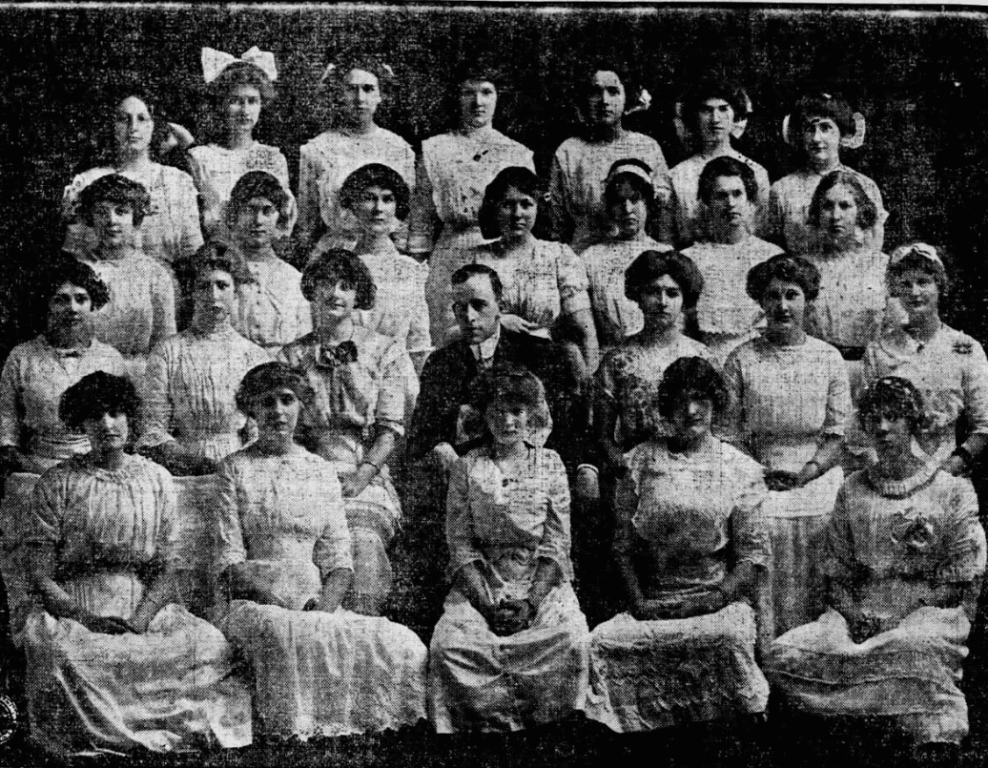
The West Hartford High School Girls’ Glee Club in 1913. Bertha Kaeser is seen top right, third from row; Instructor James D. Price at center. Photo courtesy of Noah Webster House & West Hartford Historical Society
At the end of the 1915 school year, James Price resigned as instructor to become supervisor of music in Hartford. Unlike the previous iterations of the glee club town-wide when faced with a departing leader, the Boys’ and Girls’ Glee Clubs continued into the 1920s. During World War I, they were renamed the Home Guard Glee Club and performed at war rallies in 1918. They were led in the early 1920s by the former director of the Yale Glee Club and were essentially formalized into the standard extracurriculars of the new Hall High School.
The organization of the junior high schools – particularly Plant and Talcott in the early 1920s and then Sedgwick in 1930 – brought new glee clubs to each one. Each religious institution and neighborhood tended to develop separate groups, like the Swedish Glee Club on Park Road. By the late 1940s, however, the glee clubs hit a plateau in membership and interest, although they have continued to exist in one form or another since.
By the mid-20th century, music programs in schools became more structured, with a focus on choirs, bands, and orchestras, which tended to overlap with the glee clubs. Traditional single-gender glee clubs gave way to mixed-voice groups. And as schools added more activities over the years, students faced more competition for their time.
The incoming wave of modern music, like rock ‘n’ roll, forced the traditional glee club repertoires to change. In a way, the old West Hartford choirs and glee clubs represented our modern phenomenon of joining a band or starting up a small group (even our modern glee clubs and a cappella groups) with friends.
We are connected to the very beginnings of West Hartford when music helped bind together a small settlement at the local church.
Jeff Murray was born and raised in West Hartford and has been involved with the Noah Webster House & West Hartford Historical Society since 2011 when he was a high school student and won the Meyer Prize for his essay on local history. Jeff routinely volunteers as local history researcher uncovering information for numerous museum programs such as the West Hartford House Tour and West Hartford Hauntings. Jeff works as a data analyst at Pratt & Whitney.
Like what you see here? Click here to subscribe to We-Ha’s newsletter so you’ll always be in the know about what’s happening in West Hartford! Click the blue button below to become a supporter of We-Ha.com and our efforts to continue producing quality journalism.


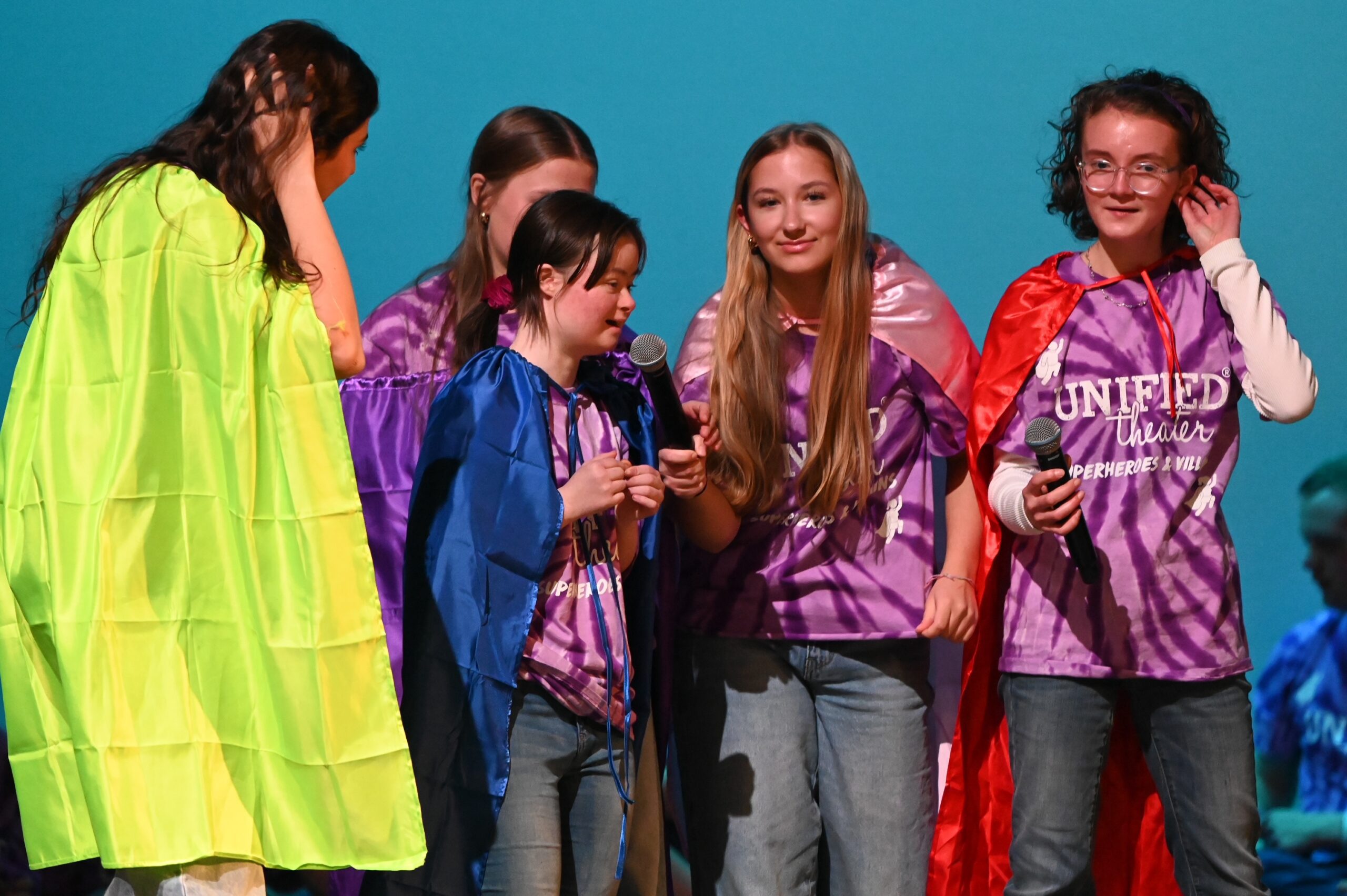
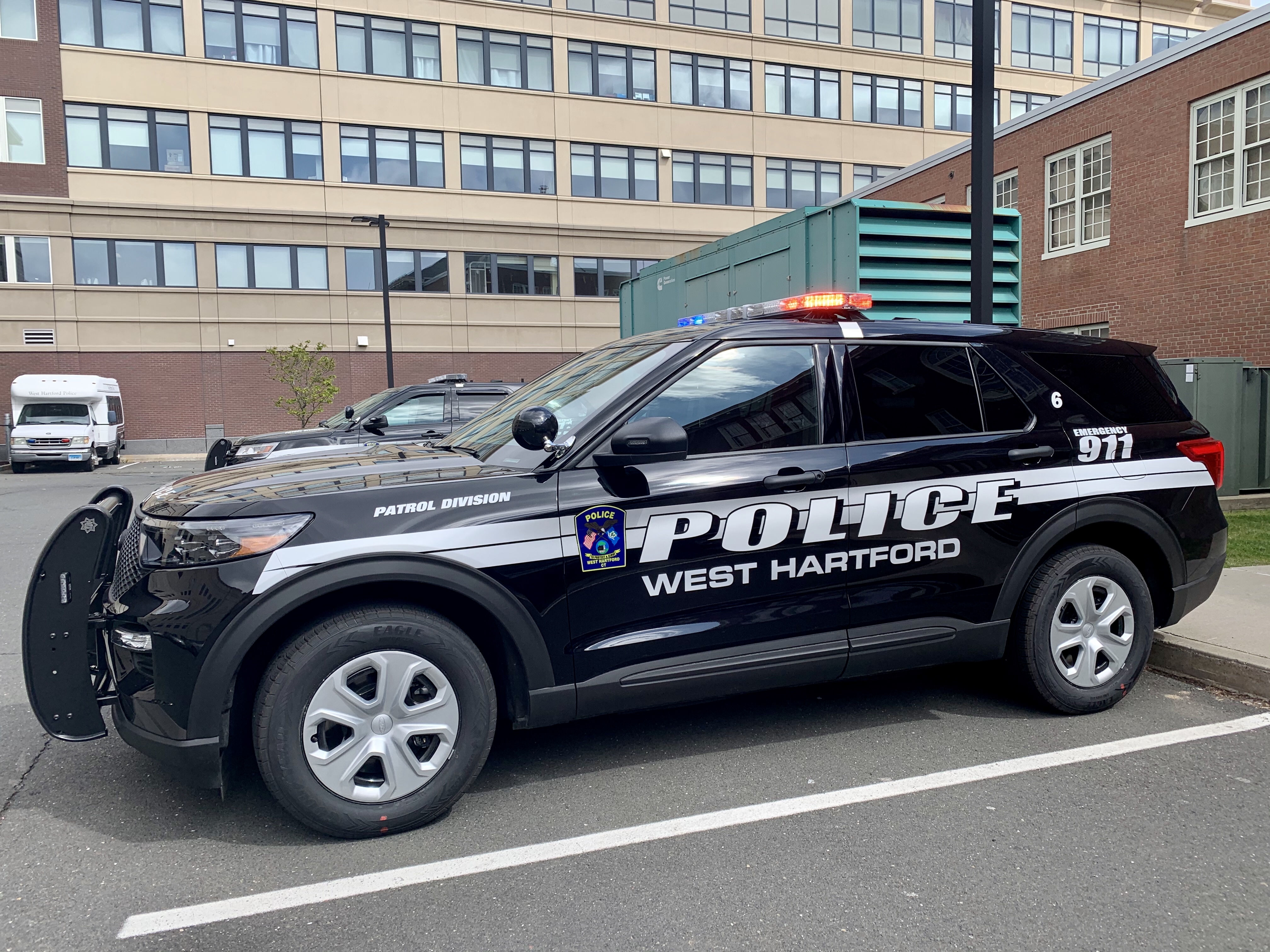
Great history and documentation of how the difficulty of ensemble singing leads to the waxing and waning interest. The challenge of organizing requires different skill sets than maintaining interest, and program selection complicates continuity. Yet, in spite of challenges today our community supports the West Hartford Symphony and West Hartford Women’s’ Chorus, unique opportunities to simultaneously share music skills. The memorable performance of the Battle Hymn of the Republic by the Naval Academy Glee Club at the inauguration is an example of the power of ensemble singing.